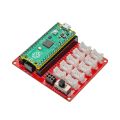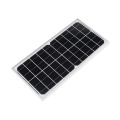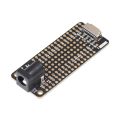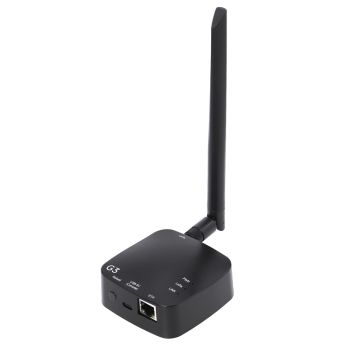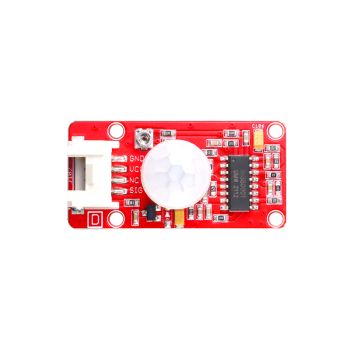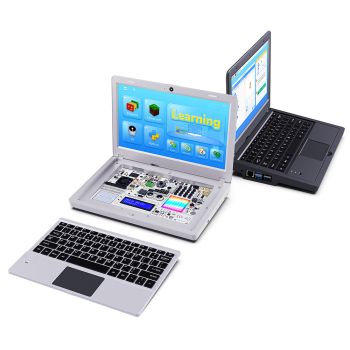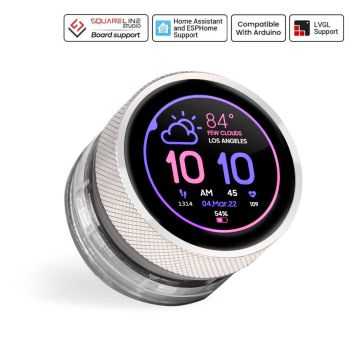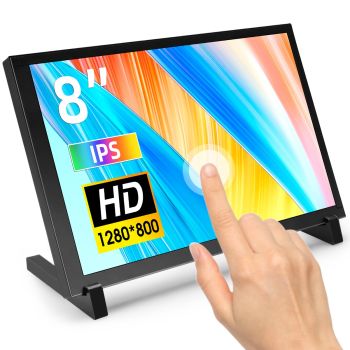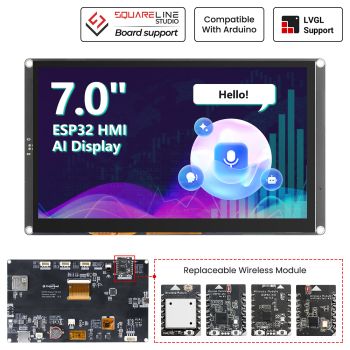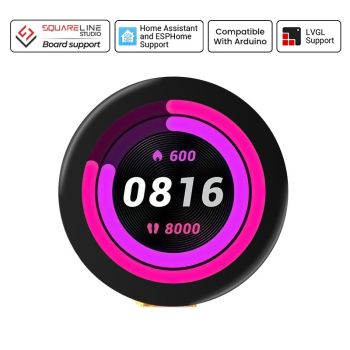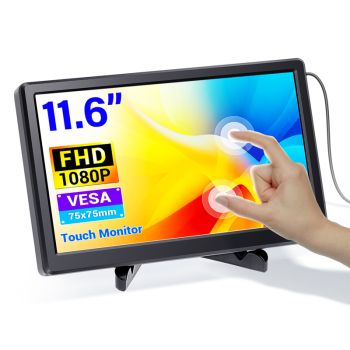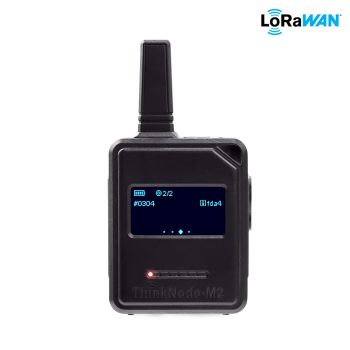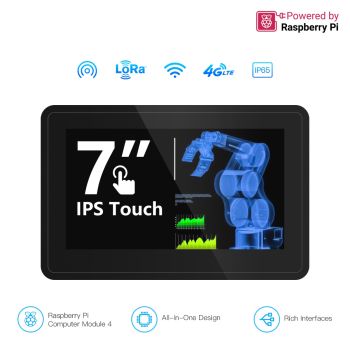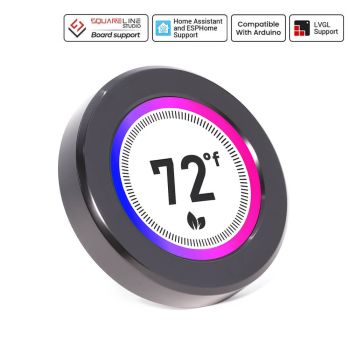Currency
ESP32-S3 PowerFeather
$30.00
Availability:
In stock
SKU
CQC240319P2
Weight
55g
×
 Add to cart successfully!
Add to cart successfully!


Customers Who View This Item Also Bought
ESP32-S3 PowerFeather is a low-power, solar-capable, Li-Ion/LiPo-powered IoT development board in a Feather-compatible format.
Frequently Bought Together
Description
ESP32-S3 PowerFeather is a low-power, solar-capable, Li-Ion/LiPo-powered IoT development board in a Feather-compatible format. It is perfect for building portable/mobile devices requiring battery power, or devices deployed in remote areas relying on a combination of battery power and off-grid power sources such as solar panels.
Here are a few reasons why you should use ESP32-S3 PowerFeather for your next project:
- Powerful Brains & Connectivity: The board features an Espressif ESP32-S3 module at its core. This module has a speedy dual core processor, tons of flash and RAM, a rich set of peripherals and built-in 2.4 GHz Wi-Fi + Bluetooth LE.
- Low Power: The board’s circuitry has been thoughtfully designed and components carefully chosen to minimize quiescent current. As a result, current consumption when the ESP32-S3 is in deep-sleep can be as low as or under 20 µA.
- Flexible Power Management & Monitoring: The board has a firmware-controllable charger IC, a battery fuel gauge and other hardware/circuitry to give users utmost flexibility in power management and monitoring. The application firmware can enable or disable charging on-demand, set maximum battery charging current, get an estimate of the battery’s charge and health, turn off a 3.3 V output rail, and much more!
- Direct Solar Connection: The board accepts an external DC source up to 18 V, which can either be your typical wall wart adapter or a solar panel. If using a solar panel, the maximum power point (MPP) voltage can be set to extract power at near-MPPT effectiveness.
- Extensive Hardware & Software Support: There is an accompanying Arduino and ESP-IDF SDK to give users easy access to the board’s power management and monitoring features. On the hardware side, the board is compatible with hundreds of existing FeatherWing and STEMMA QT modules for faster prototyping.
Features and Specifications
Physical
- Board Dimensions: 65 mm L x 23 mm W x 7 mm H
- Feather-compatible format, FeatherWing support
- Board Features
- USB-C connector
- Two 2.5 mm mounting holes
- Two 1x16 2.54 mm header pin holes
- Thermistor pin hole
- 2-pin JST PH Li-ion/LiPo battery connector
- 4-pin JST SH STEMMA QT connector
- Green user LED
- Red charger status LED
- User button
- Reset button
- On-board PCB antenna
Capabilities
Compute Resources
- 240 Mhz Dual-Core Xtensa LX7 Processor
- RISC-V / FSM Ultra Low Power Coprocessor
- 8 MB Quad-SPI Flash
- 2 MB Quad-SPI PSRAM
- 512 KB SRAM
- 16 KB RTC SRAM
Power Management & Monitoring
- Supply Monitoring
- Current measurement
- Voltage measurement
- Good supply detection
- Supply Management
- Set maintained supply voltage (can be used to set MPP voltage)
- Battery Monitoring
- Voltage measurement
- Temperature measurement
- Current measurement (charge/discharge)
- Charge estimation
- Health & cycle count estimation
- Time-to-empty and time-to-full estimation
- Low charge, high/low voltage alarm
- Battery Management
- Enable/disable charging
- Set max charging current
- Others
- 3V3 enable/disable
- VSQT enable/disable
- FeatherWing enable/disable via EN pin
- Power States
- Ship mode
- Shutdown mode
- Power cycle
- Battery Protections
- Undervoltage Detect @2.2 V, Release @2.4 V
- Overvoltage Detect @4.37 V, Release @4.28 V
- Discharge overcurrent @1.5 A
- Trickle charging safety timer @1 hr
- Temperature-based charging current reduction based on JEITA, cutoff at 0 °C and 60 °C.
Interfaces
- Radio
- 2.4 GHz Wi-Fi 802.11b/g/n on PCB antenna
- Bluetooth 5 LE + Mesh on PCB antenna
- Connectors
- USB 1.1 Full-Speed OTG on USB-C connector
- I2C on STEMMA QT connector
- Pin Holes
- 23 I/O on the two 1x16 2.54 mm pitch header pin holes
- All digital input and output capable
- All UART, I2C, SPI, I2S, SDIO, PWM, CAN, RMT, Camera, LCD capable
- 6 analog input capable 5 touch input capable
- 12 RTC capable (deep sleep pin hold, wake-up source)
- 103AT input on thermistor pin hole
- 23 I/O on the two 1x16 2.54 mm pitch header pin holes
Power
Input
- 5 V, 2 A max on VUSB USB-C connector
- 5 V - 18 V, 2A max on VDC header pin
- 4.2 V max, 2 A max on BATP and BATN JST PH Li-ion/LiPo battery connector
Output
- 3.3 V, 1 A max shared between board, 3V3 header pin and VSQT STEMMA QT connector
- 3.3 V - 4.2 V, 3 A max shared between board and VBAT header pin
- 5 V - 18 V, 2 A max shared between board and VS header pin
Current Consumption
| Deep-Sleep, Fuel Gauge Enabled (Initial) | 26 μA |
| Deep-Sleep, Fuel Gauge Enabled (Settled) | 18.5 μA |
| Deep-Sleep, Fuel Gauge Disabled | 18 μA |
| Ship Mode, Fuel Gauge Disabled | 1.5 μA |
| Shutdown Mode, Fuel Gauge Disabled | 1.4 μA |
Package List
- (1) ESP32-S3 PowerFeather
- (2) 16-pin 2.54 mm pitch male headers
- (2) 16-pin 2.54 mm pitch female stacking headers
Optional Items
- Semitec 103AT-4 Thermistor: The specific thermistor to use if you plan to measure the battery temperature or make use of the temperature-based charging current reduction/cutoff.
Other Products
Useful Links
- See the Documentation for more hardware details and usage guides.
- Visit the Community Forum for announcements, conversations, help/support requests and showcases.
Write Your Own Review
Bestselling Products You May Like
New Products You May Want







